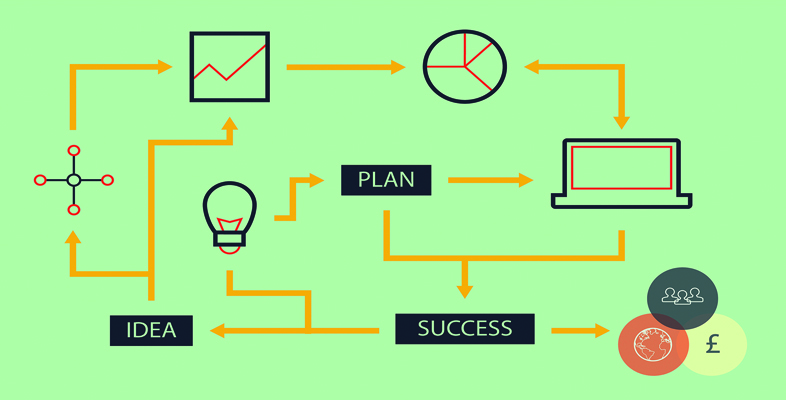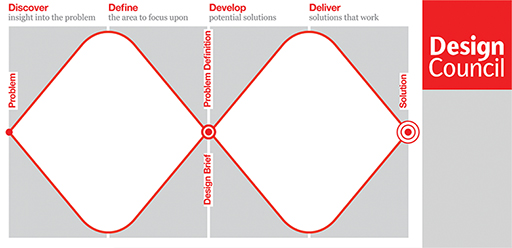5.2 Framing
‘Framing’ is the ability to recognise the type of issue in hand and structure it in a way that allows you to try alternative ideas to arrive at a solution. If one idea doesn’t work, try another. Framing is all about applying different approaches to describe the problem and applying potential solutions in different ways – it often starts with the question ‘what if…?’.
This framing technique works where there is a clear sense of what needs to be achieved. It means thinking about:
- how people are going to use the things you plan to make
- how you will create value and, critically, for whom.
Thinking like a designer is an excellent way to think about the future. While you retain a view of the value you want to achieve, during exploratory phases this means defining clearly what the real nature of the underlying problem is. Only once this is agreed does it make sense to move onto alternative possible solutions.
For each possible solution, a sense check is used to demonstrate how each different frame may impact on the desired outcome. The UK Design Council has formalised this in its ‘double diamond’ process (Figure 4), which identifies four distinct phases: discover, define, develop and deliver.
- Discover: this phase is intended to provide more insight into the problem or challenge being addressed. Hence this opens up thinking.
- Define: in this phase the intention is to focus upon specific areas to identify priorities, test assumptions and feasibility
- Develop: once more, thinking is broadened out to highlight all potential solutions, prototypes and concepts that can be tested
- Deliver: in this phase, evaluation of alternatives is designed to filter down to solutions that will be finalised and produced.
For a more detailed look at the UK Design Council’s double diamond process visit the Further reading section at the end of this session. For an alternative, the ‘d school’ at Stanford also provides insights, which you can also find out more about in the Further reading section.
Activity 4 Generating and evaluating ideas
- Think of a problem or irritation you are aware of – or else simply try to create something for fun. Now watch this detailed approach to brainstorming and come up with as many ideas as you can to solve your problem or create something.
Try to come up with at least five ideas. Don’t filter or judge them in any way yet and remember they can be anything you want. In the next part of the activity you will explore how you filter your ideas.
- Academic Roger Martin and designer Tim Brown (Brown and Martin, 2015) have suggested that designers juggle the following questions when they assess ideas:
- Is it suitable – does the idea actually address the issue?
- Is it feasible – is it technically possible?
- Is it acceptable – is it acceptable to all stakeholders?
Using Table 3 below, write down each of the ideas you came up with and score it 1 to 5 for suitability, feasibility and acceptability, with 5 being the most and 1 the least, to see which one scores highest. The blank column is for you to add your own filtering criteria. You could add different things that are significant to you such as: fit with family, passion, suits lifestyle, or whatever is the most relevant for you.
| Idea | Suitable | Feasible | Acceptable | Significant criteria | Total |
Discussion
This is a simple exercise, though oddly effective. Often people completing this exercise feel they want one particular idea to win and so they might ‘fix’ the scores, or else feel disappointed afterwards. This highlights how we tend to filter out ideas ‘that will never work’, or where we feel ‘nobody would go for this’. It hopefully also highlights the importance of removing those initial filters before putting them back in in a systematic way.

